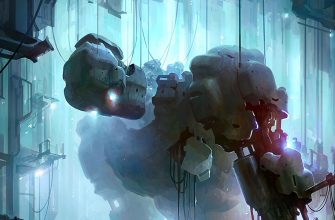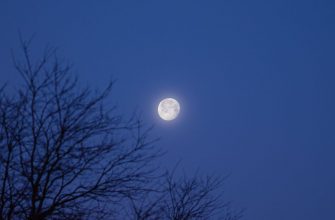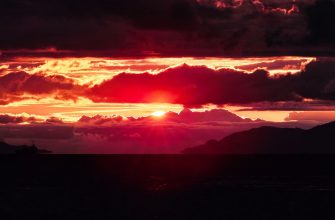English
Smolensk – the stories of real Russia in English

Smolensk is one of the oldest Russian cities with marvelous history steeped with warriors’ glory, inspiring legends and unraveling the true history of Russia. First mentioned in the chronicles in 863 A.D. it grew into the big trading city in the Middle Ages but then the fate turned it to the warrior’s path.
Through centuries Smolensk had been bravely fighting against the troops of the Polish ruler Sigismund III Vasa, the French emperor Napoleon and the Nazis. The city was destroyed many times and always reborn from the ashes like an eternal phoenix that is depicted on the coat of arms of Smolensk.
Smolensk has got plenty of great monuments and historical sites that will leave no one untouched. The outstanding piece of architecture – the17-18th century Assumption cathedral strikes everyone with its beauty, richness. The pearl of the cathedral is the icon of the Smolensk Mother of God called “Hodegitria” that takes its origin from the Byzantium and influences the history of not only Smolensk but also Moscow and all of Russia.

The mighty 17th century Smolensk fortress wall gives you the stories of real braveness and glory of the soldiers and officers of different centuries, it inspires you imagination and it’s strengthening your spirit when you walk beside it.
Plenty of monuments of different epochs will open a great book of life in front of you, show rise and fall of the empires and the eternal beauty of Russia and its people.
If one wants to dive into the depths of the centuries Smolensk provides the opportunity to visit the unique churches of the 12th century that survived in our town and the Gnezdovo burial mounds archeological complex that used to be a big Viking settlement in the Middle Ages.

If you are interested in the WWII history you can find the “Hitler’s bunker” hidden in the forest near Smolensk and get to know the elk-blogger a precious gift from the famous Hermann Göring’s country house.
Visiting Smolensk you’ll learn that a lot of famous people of Russia and the world were born in Smolensk region. They are the first cosmonaut Yuri Gagarin, the founder of the Russian classical music Mikhail Glinka, the famous traveler Nikolai Przhevalsky, the sci-fi writer Isaac Azimov and ever the man who started the Checker motors corp. and the “yellow cab” brand Morris Markin.
Being in Smolensk you’ll have a chance to taste nice food, meet good people, who’s trying to make life in modern Russia better.

My name is Mike and I’m happy to welcome you in Smolensk – the city of stories – and I’m willing to share its treasures with you. You can reach me via e-mail, Facebook, Viber or my website.
I’m a licensed guide with ten years of experience and I provide different kinds of English language tours in Smolensk region.
If you travel to Moscow keep it in mind that Smolensk is easily accessible from the Belorussky Railway station by the everyday high speed train “Lastochka”. The journey to Smolensk will take you only four hours and I will be able to meet you at the station if you need it.
Тема Смоленск на английском языке: достопримечательности, рассказ о городе
Smolensk is a beautiful and big city in Russia. Смоленск – красивый и большой город в России.
Smolensk is one of the oldest cities in our country. It was founded in the ninth century. Smolensk has the title of “Hero City” and many other famous awards.
Смоленск это один из самых древних городов в нашей стране. Он был основа в девятом веке. Смоленск носит звание “Город-Герой” и многие другие известные награды.
There are many attractions in Smolensk, which are visited by several hundred of thousands of tourists every year.
В Смоленске много достопримечательностей, который каждый год посещают несколько сотен тысяч туристов.
It rains a lot in the city. Winters are not very cold, snow falls a little and do not even freeze ponds. Summer is warm.
В городе очень часто идут дожди. Зимы здесь не очень холодные, снега выпадает немного и даже не замерзают водоемы. Летом очень тепло.
City sights – Достопримечательности города:
The main attraction of the city is the Smolensk Kremlin. This is a majestic ancient building, which was built in the 16th century. Initially, it played the role of the main defensive structure.
Самая главная достопримечательность города – Смоленский Кремль. Это величественное древнее здание, которое было возведено в 16 веке. Изначально оно играло роль главного оборонительного сооружения.
Also in the city there are many churches and churches, known not only in Russia but also around the world. For example, the Church of St. George.
Так же на территории города находятся многие храмы и церкви, известные не только в Росиии, но и по всему миру. Например, церковь Георгия Победоносца.
In Smolensk there are many interesting museums of art, history of the city and others. Many tourists visit theaters, where they often play plays and performances based on folk tales and ballads. The most popular is the Griboyedov drama theatre.
В Смоленске располагаются много интересных музеев искусства, истории города и другие. Многие туристы посещают театры, где часто играют пьесы и спектакли по мотивам народных сказок и баллад. Самый популярный это драматический театр Грибоедова.
Many tourists like to be photographed with the monuments of the city. In Smolensk were erected monuments to the great poet Pushkin, composer Glinka and other famous personalities.
Многие туристы любят фотографироваться с памятниками города. В Смоленске были возведены памятники великому поэту Пушкину, композитору Глинке и другим известным личностям.
The most popular Souvenirs of Smolensk are bells and other clay products, various painted dishes. Also in the souvenir shops for a small price you can buy carved wood decorative figures and ornaments. Products from the masters of Gzhel and Khokhloma can be bought at any local market.
Самые популярные сувениры города Смоленск – колокольчики и другие изделия из глины, различная расписанная красками посуда. Также в сувенирных лавках за маленькую цену можно приобрести вырезанные из дерева декоративные фигурки и украшения. Изделия от мастеров Гжели и Хохломы можно купить на любом местном рынке.
Smolensk city, Russia
Smolensk is a city located in the very west of Russia; the administrative, industrial and cultural center of Smolensk Oblast. It is one of the oldest cities in Russia, first mentioned in the chronicle in the year of 862.
Smolensk city flag
Smolensk city coat of arms
Smolensk city map, Russia
Smolensk city latest news and posts from our blog:
History of Smolensk
Early history of Smolensk
The exact date of the foundation of Smolensk is not known. In “The Tale of Bygone Years”, a history of the Kievan Rus from about 850 to 1110, Smolensk was first mentioned as the center of the tribal union of the Krivichi under the year 862. In 882, it became part of the Kievan Rus.
In 1127, the Kiev prince Mstislav the Great gave Smolensk under the control of his son Rostislav Mstislavich. After the death of his father, Rostislav became a virtually independent prince and reigned in Smolensk until 1160, when he took the Kiev throne. Thus, the foundation of the independent Smolensk Principality was laid. On the eve of the Mongol invasion, it was one of the most powerful Russian principalities.
The time before the Mongol invasion was the heyday of Smolensk. It occupied an area of 115 hectares, on which there were about 8 thousand houses with a population of about 40 thousand people. In terms of the number of stone churches erected at the turn of the 12th and 13th centuries, Smolensk surpassed any other town in Rus. In 1229-1230, up to 32 thousand people died from the plague in Smolensk.
During the Mongol invasion, Smolensk was not damaged, but a lot of areas of the principality were devastated and Smolensk lost its significance. Its dependence on the Grand Duchy of Lithuania began to grow. In 1387, a plague took the lives of almost all the residents of Smolensk. For some time Smolensk remained deserted.
For most of the 15th century, Smolensk was under the control of the Grand Duchy of Lithuania. During the Russian-Lithuanian War of 1500-1503, the Russian army unsuccessfully besieged Smolensk in 1502. In 1508, Smolensk became the center of the Smolensk Voivodeship of the Grand Duchy of Lithuania. In the summer of 1514, after the third siege in a row, Russian troops were able to capture Smolensk. It became the most important fortress on the western border of the Russian state.
In 1609, taking advantage of the weakening of the Russian state during the Time of Troubles, the army of Sigismund III Vasa, King of Poland and Grand Duke of Lithuania, began a siege of Smolensk. The siege lasted 20 months and eventually Smolensk was captured and became part of the Polish-Lithuanian Commonwealth.
This long defense of Smolensk played a decisive role on further events, since Sigismund, who spent all his money on it, was forced to disband his army instead of leading it further to Moscow. Thanks to this, the Moscow garrison of the Poles, which did not receive serious support, was subsequently forced to capitulate to the Russian militia.
In 1613-1617, an attempt to recapture Smolensk ended in vain for the Russian troops. In 1634, during the Smolensk War, the Russian army again laid siege to the town, but the appearance of an army under the command of King Ladislaus IV led to the fact that the Russian army itself was under siege and surrendered. In 1654, the Russian army approached Smolensk again. As a result, it was finally annexed to the Russian state. In 1708, it became the center of the Smolensk Governorate.
Smolensk in the 20th century and beyond
In 1900, there were more than 56 thousand residents in Smolensk; 10 squares, 139 streets, 3,261 buildings (633 stone buildings), 32 Orthodox churches, 1 Catholic and 1 Lutheran churches, 2 synagogues, and 3 monasteries. In 1912, the city celebrated the 100th anniversary of the war against Napoleon: a number of monuments to that war appeared in Smolensk, including the Alley of Heroes with busts of commanders.
In April 1918, in connection with the occupation of the Belarusian lands by German troops during the First World War, secured by the Brest Peace, the Smolensk Governorate became part of Zapadnaya (Western) Oblast, its administrative center was moved from Minsk to Smolensk.
On January 1, 1919, on its basis, the Socialist Soviet Republic of Belarus was formed. On January 7, the SSRB government moved from Smolensk to Minsk. On January 16, 1919, the Smolensk region was transferred to the Russian Soviet Federative Socialist Republic. In 1929, the Smolensk Governorate was abolished and Zapadnaya Oblast was formed with the center in Smolensk. In 1939, the population of Smolensk was 156,884 people.
From July 10 to September 10, 1941, during the Second World War, the Battle of Smolensk took place, which significantly delayed the advance of German troops to Moscow. On July 16, 1941, Smolensk was occupied by German troops. It was liberated from German occupation on September 25, 1943. More than 90% of buildings in the city were destroyed. In 1945, Smolensk was included in the list of 15 Russian cities subject to priority restoration.
On July 30, 1952, an expedition of the Moscow University under the leadership of D.A. Avdusin during excavations on Sobolev Street found the first birch bark letter in Smolensk. In the post-war years, especially in the 1960s and 1970s, a lot of industrial production facilities, educational institutions, healthcare and power engineering facilities were put into operation in Smolensk. On May 6, 1985, Smolensk was awarded the title of Hero City. In 1989, the population of the city was 341,483 people.
On April 10, 2010, while landing at Smolensk-Severny Airport, one of the largest disasters in the history of world aviation occurred, in which the political leaders of Poland, famous public and religious figures were killed (88 passengers and 8 crew members including the President of Poland Lech Kaczynski and his wife Maria Kaczynska).
In September 2013, Smolensk celebrated its 1150th anniversary.
Smolensk views
Architecture of Smolensk
Author: Andrey Dmitriev
Part of the Smolensk Fortress Wall
Author: Kiyanovsky Dmitry
Novodevichy Convent in Smolensk
Author: Jan Erik Forss
There are several versions of the origin of the name of Smolensk. According to one of them, it goes back to the name of the Smolnya River. Another version mentions the famous trade route “from the Varangians to the Greeks.” Residents of the town were engaged in the production of resin (“smola” in Russian) used to give boats greater strength. The pine forests in the immediate vicinity of the town favored the construction of boats and the production of resin.
The origin of the coat of arms of Smolensk is not known for certain. It was first mentioned in 1664. On the silver shield you can see the Gamayun bird (a prophetic bird of Russian folklore) on a black cannon with a golden gun carriage. The cannon symbolizes the city’s rich military history, its crucial border position. The bird of paradise Gamayun is a symbol of happiness and striving for it, peace, and rebirth after wars.
Smolensk is located about 400 km west of Moscow, in the upper reaches of the Dnieper River. The city has an advantageous geographical position on the routes from Moscow to Belarus, the Baltic states, countries of Central and Western Europe. It stretches 25 km from west to east and 15 km from north to south.
Smolensk is a major transport hub of western Russia. The main cargo and passenger flows from the countries of Western Europe, the Baltic States, and Belarus pass through it. The city has a developed rail and highway connection with Moscow and St. Petersburg. Trains run through Smolensk to Minsk, Brest, Vilnius, Kaliningrad, Warsaw, Berlin, Prague, Vienna, Paris, Nice.
Favorable geographical position at the intersection of transport routes connecting Moscow and Western Europe, proximity to large industrial centers of Russia and to the European sector of the world market are the main competitive advantages of Smolensk. The border position of the Smolensk region predetermines the possibility of intensifying cross-border cooperation.
Main Attractions of Smolensk
Smolensk Fortress Wall (1595-1602). The Smolensk fortress was of great defensive importance in the Russian state. Most of it was destroyed by the retreating troops of Emperor Napoleon I on November 17, 1812, during the French invasion of Russia. Only 18 towers and about 3.5 km of wall fragments have survived to this day and have the status of an architectural monument. Barklaya-De-Tolli Street, 7.
During the wars of 1812 and 1914-1945, the building was not damaged. The iconostasis and decoration in the Kiev baroque style have been preserved inside. The observation deck located here offers beautiful views of Smolensk and the Assumption Cathedral itself. Sobornyy Dvor Street, 5.
Today, almost every house that has been preserved on Bolshaya Sovetskaya Street is an architectural “gem” worthy of special attention. Most of the residential and office buildings facing the main street are recognized as monuments of architecture and history. Some of the buildings destroyed during the Second World War have been carefully restored to their original form using photographs and archival documents.
Deer Sculpture in Blon’ye Garden. In 1909, in the vicinity of his hunting lodge in Rominten Forest, Kaiser Wilhelm II, the last German Emperor, shot a deer with unusually gorgeous antlers. The emperor liked this hunting trophy so much that he decided to immortalize it in bronze. For this, the then famous sculptor-animalist Richard Frize was invited. In 1910, a sculpture was installed on a pedestal near the chapel of St. Hubert. The resulting bronze deer turned out to be about one and a half times larger than the original animal.
In 1944, the sculpture disappeared. One year later, it was discovered by the Red Army at the country house of Hermann Goering. After the war, this bronze deer was transported to Smolensk. In 1945, on the side of the trophy, one could still read the white ink inscription: “A gift from East Prussia to the children of Smolensk.” The sculpture was installed in the playground in Blon’ye Garden, a park in the city center. Glinki Street, 1.
Smolensk Art Gallery. This museum is located in the building, which is a monument of civil architecture of the 19th century. It displays collections of Russian and Western European art: paintings by Repin, Aivazovsky, Levitan, Benoit, Falk, Roerich, and other masters, as well as sculptures. There is also an extensive exposition of the Soviet period. Temporary exhibitions of contemporary artists are held here as well. Kommunisticheskaya Street, 4.
Historical Museum of Smolensk. The exhibitions of this museum are about the history of the Smolensk region from the Stone Age to the New Age. Here you can see ancient tools, medieval armor, weapons, coins, jewelry, household items, and much more. Lenina Street, 8.
Attractions of Smolensk
Smolensk Railway Station
Author: Kirill Afonin
Another preserved part of the Smolensk Fortress Wall
Author: Olga Pozdina
Monument to Lenin in Smolensk
Museum “Smolensk Flax”. The history of the development of flax growing in the Smolensk region is presented in detail here (arable tools, tools for the cultivation and processing of flax, spinning wheels, Smolensk costumes with belts and headdresses). A separate part of the exposition is devoted to household items traditionally present in the Russian hut. The museum is located in Nikolskaya Tower of the Smolensk fortress wall. Marshala Zhukova Street, 6.
Sergey Konenkov Sculpture Museum. This famous Russian and Soviet sculptor born in the Smolensk region was often called “the Russian Rodin”. The museum was created on the initiative of the sculptor, who wished to exhibit most of his works in Smolensk. The collection is housed in a picturesque 19th century mansion in the city center. The exposition consists of 80 works on religious, revolutionary and everyday topics. Mayakovskogo Street, 7.
The exposition includes items and documents showing the role of Smolensk in the history of the war. The collection of military artifacts contains valuable archival documents and photographs, weapons and military uniforms, banners and awards, soldier’s household items and trophies from Germany. Wartime military equipment is on display in front of the museum. Dzerzhinskogo Street, 4A.
Smolensk city of Russia photos
Churches of Smolensk
Neo-Gothic Catholic Church of the Immaculate Conception of the Blessed Virgin Mary in Smolensk
помогите написать сочинение про Смоленск на английском языке с переводом спасибо
Помогите написать сочинение про Смоленск на британском языке с переводом спасибо заблаговременно.
Smolensk is one of the most ancient cities of Russia. It was founded in the year 863. In September 2013, Smolensk celebrated its 1150th anniversary. The city is situated in the western part of Russia on the river Dnieper. (About 400 kilometres from Moscow) Smolensk is the administrative, industrial and cultural centre of the Smolensk region. More than 330 thousand people live in the city. (2018 г.) During its long history Smolensk had been destroyed and burned, but every time it was rebuilt again and again. Nowadays Smolensk is divided into three city districts. You can meet the main sights of Smolensk, walking on foot. Two of the main attractions are the Dormition Cathedral and the fortress wall. There are a lot of theatres, cinemas, cultural centres and a zoo in the city. There are a lot of industrial factories and plants there. There are also a lot of schools, hospitals, shopping centres, squares and parks in Smolensk. There are two airports, three automobile bridges across the Dnieper, a lot of buses, trolleybuses and rout taxies in the city, and also a railway station and a bus station. After the Great Patriotic War, Smolensk was awarded the title of the Hero City.
Смоленск-один из древних городов Рф. Он был основан в 863 году. В сентябре 2013 года Смоленск отпраздновал свое 1150-летие. Город размещен в западной доли Рф на реке Днепр. (Около 400 км от Москвы) Смоленск-административный, промышленный и культурный центр Смоленской области. В городке проживает более 330 тыщ человек. (2018 г.) За свою долгую историю Смоленск разрушался и пламенел, но каждый раз перестраивался снова и снова. Сейчас Смоленск делится на три городских окрестность. Главные достопримечательности Смоленска можно встретить, прогуливаясь пешком. Две из основных достопримечательностей-Успенский собор и крепостная стенка. В городке много театров и есть зоопарк. Там много промышленных предприятий и фабрик. В Смоленске также много школ, больниц, торговых центров, парков. В городе два аэропорта, три автомобильных моста через Днепр, много автобусов, троллейбусов и маршрутных такси, а также жд вокзал и автовокзал. После Большой Отечественной войны, Смоленску было присвоено звание городка-героя.
«Смоленск- мой родной город «, презентация по английскому языку
специалист в области арт-терапии
Описание презентации по отдельным слайдам:
Smolensk is one of the oldest Russian towns: Like Moscow stands on seven hills, but it is older than Moscow. Smolensk is as old as Kiev and Novgorod. In Ustyug chronicles I was mentioned in the year 863 as the city which was «big and populous».
Smolensk is the city of military glory. The ancient fortified walls of Smolensk keep the memory of the great historic events: Defence of the town in 1609-1611 The battles of the 1812 Patriotic War The Smolensk battle of the Great Patriotic War of 1941-1945
Defence of the town in 1609-1611
The battles of the 1812 Patriotic War
The Smolensk battle of the Great Patriotic War of 1941-1945
Military glory of Smolensk is commemorated by the numerous monuments. Monument with Eagles The monument to Sophia’s Regiment are (devoted to the war with the Napoleon Army). The monument to Kutuzov
The monument to the liberators of the Smolensk region from fascist invaders in 1943 The monument «Mourning Mother,(the monument to V.Kurilenko are devoted to people who fought heroically defending their Motherland).
Tourists’ attention is attracted by a number of historical architectural buildings: The most important part of Smolensk architecture is the 16th century fortilned wall (architect F.Kon).
Beyond comparison is the Cathedral of the Assumption. Built in the XVIII century the Cathedral has very rich decorations inside.
There are many other churches and architectural buildings in Smolensk: Veselukha Tower The Mikhail Archangel Church Nikolsk Gate The Church of St.Peter and Paul
Many outstanding people were born in Smolensk and its region. There are many memorial places connected with their life in Smolensk. Composers: Glinka Dargomyzhsky
Painters: Roerich Yablonskaya
Sculptors: Konenkov Mikeshin Kerbel
Poets and writers: Isakovsky Tvardovsky Rylenkov Belayev
Cosmonauts: Gagarin Nikolayev
Smolensk is a modern regional centret 490 thousand people live in it. Some 60 large industrial enterprises work there. The most developed industries of the town are instrument-making and engineering, poligraphical industries.
Номер материала: ДБ-898760
Не нашли то что искали?
Вам будут интересны эти курсы:
Оставьте свой комментарий
Подарочные сертификаты
Раннее начало пар негативно сказывается на успеваемости студентов
Время чтения: 2 минуты
Низкие способности к самостоятельному выполнению заданий приводят к трудностям в обучении
Время чтения: 3 минуты
Каждый третий школьник отстает в учебе
Время чтения: 3 минуты
Минпросвещения готово рассмотреть альтернативы ЕГЭ
Время чтения: 1 минута
Китайский университет зачислил на факультет информатики искусственный интеллект
Время чтения: 1 минута
Минпросвещения подготовило концепцию проекта цифрового профиля учащихся
Время чтения: 1 минута
Ответственность за разрешение любых спорных моментов, касающихся самих материалов и их содержания, берут на себя пользователи, разместившие материал на сайте. Однако администрация сайта готова оказать всяческую поддержку в решении любых вопросов, связанных с работой и содержанием сайта. Если Вы заметили, что на данном сайте незаконно используются материалы, сообщите об этом администрации сайта через форму обратной связи.
Все материалы, размещенные на сайте, созданы авторами сайта либо размещены пользователями сайта и представлены на сайте исключительно для ознакомления. Авторские права на материалы принадлежат их законным авторам. Частичное или полное копирование материалов сайта без письменного разрешения администрации сайта запрещено! Мнение администрации может не совпадать с точкой зрения авторов.




























